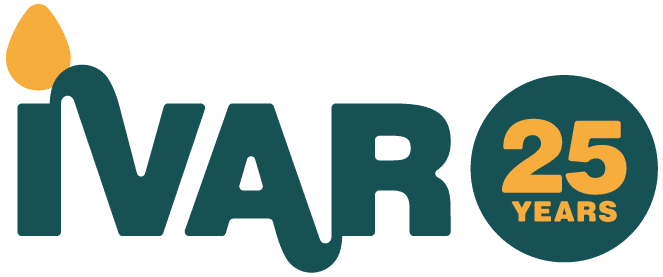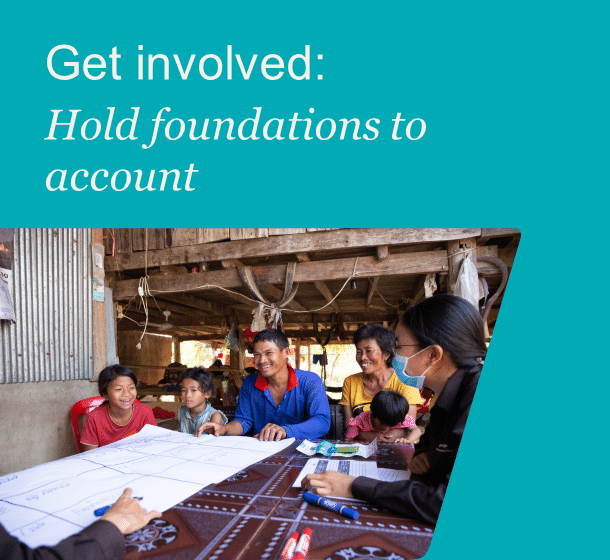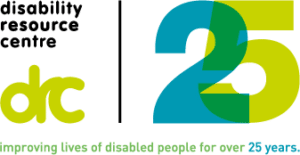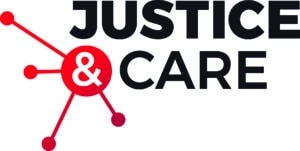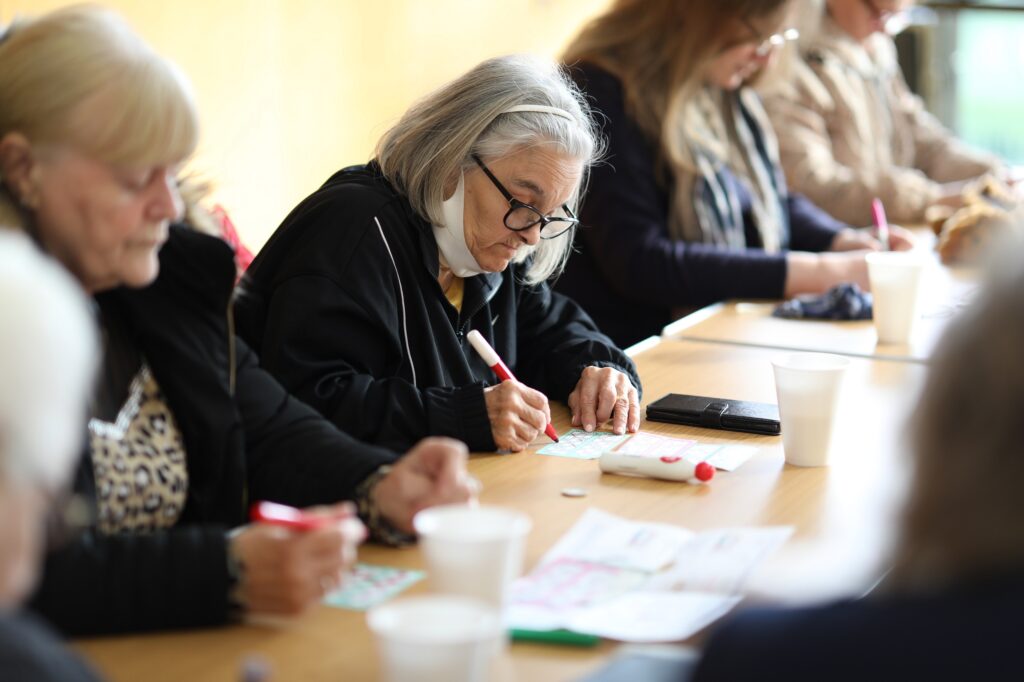
Applications and assessments
Six principles for open and trusting application and assessment processes.
Charities do not expect an easy ride from funders. They know funding is highly competitive and that they need to make a good case for support.
However, what is frustrating for charities is when funders’ requirements feel too onerous, especially for the value of the grants on offer; when application processes do not give them a chance to make their best case; and when application forms are cumbersome and clunky.
While the experiences of participating grantmakers – and the charities they fund – are far from uniform, our research ‘Let charities shine‘ looks at six principles for more open and trusting funding application and assessment processes that can guide foundations.

Let charities shine
Download the report
Principles for open and trusting application and assessments
1. Don’t waste time: Be honest about priorities and prospects
Have a conversation with prospective applicants early and be honest about their chances. If you’re unlikely to fund them: tell them. It helps charities to make informed judgements about the best possible use of their fundraising capacity and makes a huge difference to the quality of applications you will receive.
2. Accept risk: Challenge established assumptions
Without a willingness to challenge common assumptions and definitions of risk, charities with ‘fewer credentials and less reputation’ will continue to be excluded.
Careful interrogation of risk – the information needed to manage it and a better understanding of ‘risk’ from the charity perspective – while being transparent about your thinking, will help ensure applications are streamlined and considerate of the charity experience.
3. Create a chance for charities to shine
Focus on drawing out the strengths of an organisation and its work in ways that don’t make it difficult or time-consuming to engage. Consider asking questions that help organisations think and develop the best programme possible, and allowing them to use tools and methods that best suit their expression and communication style.
4. Ask relevant questions: Streamline application forms
Don’t ask charities to supply information that is not essential or can be easily found independently, to free charities up to focus on delivering for their communities.
5. Pay attention to how the process feels
Be attuned to how it feels to go through the application process. Always be open and honest by telling people what’s needed, and be clear about the relationship and how it changes through the process. When giving bad news, recognise the thought and effort that went into making the application in your rejection. It’s easier for charities to manage relationships if there’s no second guessing on where they stand.
6. Encourage meaningful feedback and act on this learning
Regularly ask partners for their feedback so you can adapt your application processes accordingly. Acting on feedback helps to improve the application and assessment process and shows respect for charities’ views. Open the door for existing grantees to be part of the grant-making conversation. Ask them to nominate relevant organisations in their network or feed in their expertise and knowledge of the community.
Case studies
The CareTech Foundation Case Study
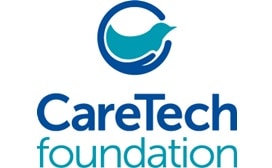

- Interviewee: Tariq Raja, Foundation Manager at CareTech Foundation
- Who we are: We are an independent foundation, founded and funded by CareTech Holdings plc, and we deliver meaningful impact to communities in the UK and overseas. We offer four funding streams: partnership grant-giving, match-funding, community grants and staff hardship funds.
- Scale of grants: In 2020, we gave over £600k in grants. Since our establishment in 2017, we have distributed approximately £1,328,000 in grants and donations.
- Our focus: Social care sector, care workers and those living in care. Our work is focused on three key areas:
- Physical and learning disabilities and mental health
- Skills development for the care sector
-
Our application process
At the CareTech Foundation, we have a three-stage application process:
- First stage: Online application form of 10 questions. This stage gives us a general sense and idea of the organisation and/or project. Applicants are offered a telephone or video call conversation prior to submission of the application.
- Second stage: A longer, open format application which can include video submissions, case studies, etc. This allows the applicant to speak in more depth about their organisation and why they want us to fund them. Trustees are appreciative of this as they prefer reviewing applications which applicants have made their own. We allow for a variety of different application formats, but still have core information that we look for (e.g. project aims, potential impact of the funding, etc.). We allow organisations to present that core information in a way that suits them. At this stage we also find information to inform our due diligence. We prefer to find this information ourselves using publicly available sources (such as the Charity Commission), and only ask applicants to send us documents if we are unable to find them using public sources.
- Third stage: Awarding the grant. All KPIs (Key Performance Indicators) are identified and agreed with applicants on a quarterly basis and a payment schedule is established in a contract.
All three stages require trustee approval to progress. Applications are shared in their entirety with trustees, with summaries provided by staff.
Engaging with grantees
Throughout the process we value honest communication with both successful and unsuccessful applicants. This helps to build strong relationships with both the organisations you end up funding, and those you don’t.
‘I speak to everyone. Whether they are successful or unsuccessful at the first stage, I will always have a follow up conversation – because we want to provide feedback to organisations dealing with us’.
Building relationships with unsuccessful organisations is important for two main reasons:
-
- You might end up funding them one day and it’s good to already be on good terms. Organisations can come back and surprise you; they might take your feedback, think about it and come back with a new programme that is better than anything you could have imagined.
- It gives you insight into the sector. Even if you don’t end up funding them, organisations have a wealth of knowledge about the communities they support. Keeping in touch with them helps us to understand the main issues in the care sector.
Why we take this approach
We are not just an organisation that gives money away, but one that wants to have a positive impact on the care sector by funding projects that we believe will have a tangible impact. By communicating with both successful and unsuccessful applicants, and having an open format application that allows them to speak about social issues in a way that feels authentic to them, we stay plugged into the sector, and can identify new and emerging ideas.
One of the reasons we connect with our applicants is to strengthen the applications we receive. In our conversations with applicants, we go through their draft and offer up comments and potential changes that they may want to consider.
We do this, as we know about the kind of questions that our trustees may have, and we want to ensure that applicants are in the best position when a decision on their application is being made.
‘If I’m not paying attention to the work they’re doing or what’s happening in the sector, and not building those relationships, eventually, there’s going to be a misstep, and we’re going to have a programme that isn’t going to really be the type of programme that we want to support’
It’s important for us to be clear with applicants when we move from their ‘assessor’ to their ‘advocate’. We are their ‘assessor’ when ensuring that their application form is the strongest that it can be. Once it goes to the trustee board to make their decision, we become their ‘advocate’, making the case for trustees to fund them.
‘In the initial stages before the board meeting and before the submission deadline, I will be the critical voice in the relationship. Once the deadline is hit and I receive the final version of the application, I become the advocate; I become the partner in the room on the day. I walk into those board meetings, ready to fight for the proposals that I have in front of me’.
Challenges we’ve encountered
Our relational approach can come with some downsides. Engaging and communicating with all applicants throughout the application process can be difficult. Finding the time and capacity to talk to applicants and comment on draft applications is time-consuming.
‘There are people relying on me being there in order for them to have the guidance to submit an application or to hold their hand slightly and say, ‘You’re doing a good job, trust me, your application looks fine’. So the downside is you have to work hard, in order to make sure that you’ve got the quality there’.
However, we believe that this is a small price to pay for the quality and diversity of the grantees we end up funding. There is an investment in being relational, and you have to put in the work in order for it to pay off.
Tips for being more engaged with applicants
- Regularly communicate with applicants. Establish a relational approach with your applicants right off the bat – even a quick 10 minute conversation can make a huge difference to the relationship you build and the quality of application you receive. I understand that it can be difficult, particularly when you don’t have a big team and are inundated with applications. However, if you don’t take the time to speak to your applicants, you’re in danger of ‘blocking everything together, and you’re saying “I will judge you purely based on what I see through the computer, and I will not give you any time to discuss with you whether there is the potential to switch things around”’.
This is also beneficial for unsuccessful applicants – if you have to deliver bad news, you can still have some sort of relationship with them, even if they are disappointed. When giving bad news, remember to tell the applicant that this doesn’t rule out any relationship in the future, and that just because the project wasn’t the right fit for your organisation, that doesn’t mean that it is a bad project.
‘People ring me and we have a relaxed and casual conversation. I will give the bad news to the trustees and the leadership the way they want to receive it. But that doesn’t mean that we break down the relationships and the rapport that we have with applicants’.
- Find due diligence information yourself, rather than asking applicants for lots of information. This also means that you get more familiar with their organisation and better at judging if the organisation is a good fit, while spotting any issues (e.g. media articles, etc.) which go against your ethos. The Charity Commission website is a good source of information.
- Consider adopting an open format element in your application stage. Be flexible in your approach so that you can help applicants present themselves in the best light.
- Stay connected to the sector. For example, volunteer or sit on a trustee board. Visit your grantees and speak to those doing the work on the ground. Remind yourself why you got involved in the sector, who you are supporting, and what it is like to work for an organisation that needs funding from people like you.
‘I have a small grievance that I hear when I’m with other grantmakers. And I always say, ‘but are you continuing to volunteer?’ Because 99% of us in this sector started as volunteers. Are you volunteering for a community group even now? Because that’s going to keep you humble, and it’s going to continue to remind you why you’re in the sector’.
- Keep learning.
‘We don’t do everything perfectly. I’m still learning, as an organisation, we are still learning, we will always be learning. But there are things that you can do to make others feel more welcome in the work that you’re trying to achieve’.
Putting people at the heart of our application process
The Joffe Charitable Trust Case Study


- Interviewee: Alex Jacobs, Director of The Joffe Charitable Trust
- Who we are: We are a small organisation that supports civil society leaders to build a fairer world. We fund small UK-based charities that have the potential to make a tangible impact and social change.
- Scale of grants: Our grants are for up to £30k per year, and we publish details of these grants online.
- Our focus: We make grants and support activities in two focus areas:
- strengthening integrity in the UK’s international financial services
How we approach funding
What our funding process looks like
At The Joffe Charitable Trust, we are passionate about helping leaders build stronger organisations. We value really getting to know our grantees. It’s not just about funding a project, but truly understanding and supporting people to build stronger organisations that can achieve lasting social change. We go beyond funding – we give strategic advice and signpost to other pots of money that may help them.
We currently have a two-stage application process:
- First stage: A four paragraph email from an organisation, describing its aims and what they would do with the funding. In other words, ‘what it’s all about’. We will usually meet with the organisation to discuss what we can offer them and hear a little bit about them before we advise that they formally apply.
- Second stage: A full open-format application. This application is taken to the board to make a final decision.
Our trustees are very engaged in our applications process and make all final decisions on whom we fund. They will also take part in interviews with some applicants, which gives them a chance to meet and talk with people about their work.
Our application process reflects our flexible and person-centred approach. Rather than receiving a highly detailed project plan, we value truly understanding an organisation and what it stands for.
‘We don’t want a beautiful project plan that covers the next three years, because no one knows what’s going to happen in three years’ time. And if people make a mistake along the way, well, of course, everyone makes mistakes along the way. What is it broadly? Is this someone who we believe in, who we feel is going to do something that’s really worth doing, that could make society better?’
When our founder Joel Joffe passed away in 2017, we did a big review of our entire funding process to see how we could further his approach. At that point, while we had quite a lot of experience, we hadn’t formalised our funding strategy. As a result of this review, we moved to a set two-stage application process, whilst still retaining our relational, people-first funding style.
Engaging with grantees
Since reviewing our funding process in 2018, we regularly ask our grantees for feedback via our annual survey, the result of which we publish online.
We see our application process as exploring our fit with the person or organisation, rather than the ‘inherent worth of what they’re doing’. We tend to arrange a meeting with the applicant, at their place of work if possible, so we can get to know them and see the kind of environment they operate in (although this has become more difficult to do during the pandemic). We also sometimes approach organisations that we feel would be a good fit. Having a conversation with applicants can help us to determine if we as a funder can be of any help to them.
‘It’s sometimes a little bit surprising for some applicants that we’re genuinely interested in helping them build a better organisation rather than just wanting to do project funding. So we have been sometimes seen as slightly unusual that way’.
Why we take this approach
Our main reasons for approaching funding applications in the way we do are to further the work of our founder Joel Joffe, and because we believe it works. Joel’s ethos was to encourage and support individuals and organisations to do great work, rather than look to fund specific projects. It is through the love and respect that we have for Joel that we continue his approach in his memory.
‘He saw the world in terms of ‘Look, here’s someone who’s got a great idea, and if we believe in them and we think it’s something that we want to support, then we’d really like to help them as a person and as a professional, to do as much as they can’. And that still is an important part of how we see our role’.
Grant-making is much more than just giving money – it’s about being invested in the organisation, understanding the issues they face and supporting them to succeed.
By building open and honest relationships with our grantees and applicants, and taking a human approach to funding, we create an opportunity to understand the work of the people we support. It’s all about helping people to make social change.
Even if they are unsuccessful with their application, we still try to offer applicants help and advice to make their case stronger in case they want to apply to us again, or indeed, apply to other funders.
Meeting with applicants in their place of work helps to re-distribute power, as the applicants are in a space that is more comfortable and familiar to them. We also try to address power dynamics in other ways, such as annual feedback surveys and ensuring that conversations around funding are open and honest. We recognise that we are just one small part of the picture and that it’s not about us; our grantees are the real experts, and helping them to make change is a privilege.
‘One of the crucial things through all of this for us is that we really recognise that we’re small scale, you know, it’s not all about us. We are a small grantmaker, and we make small grants. And if we can give people a hand to do stuff that they understand better than we do, that’s fantastic. That’s the best we can do.’
Challenges we’ve encountered
There are a few challenges in taking a person-centred funding approach. Staff time is a constraint; we are a small organisation and most staff are involved in reviewing applications and speaking to applicants. There is also a challenge in maintaining relationships with unsuccessful applicants. Whilst we try to offer them help and advice to make their application stronger in case they want to reapply or apply to other funders, many unsuccessful applicants are understandably disappointed and may not want to continue a relationship with us. There’s also a challenge in handling conflicts between different principles of grant-making, for instance between backing committed individuals and helping to build stronger organisations.
However, we believe that the pros greatly outweigh the cons. We feel that our approach to funding and applications allows us to really get to know our grantees and really support their organisation and the work they do.
Tips on humanising application processes
- Remember why you give funding. When you provide funding, you’re there to ‘offer people a hand, not to dominate or determine what they’re doing’. This philosophy should guide everything you do.
If you try to help people with proper understanding and respect, and you’ve got a chance, you might do it – you’re going to have helpful help. But if you try to help people from a point of view of patronising superiority, you’re unlikely to help anybody.
- Put applicants’ needs first. Remember what it is like for them and walk in their shoes.
Let people know that while you may have different views, you won’t try to force your viewpoints on them. And most importantly, really listen to what they say they need and what they want to achieve.
Consulting with charity partners
Texel Foundation Case Study


- Interviewee: Katy Beechey, Programme Director
- Who we are: We are a boutique, international organisation that gives funding to charities and social enterprises, and the corporate social responsibility arm of The Texel Group (a global specialist credit and political risk insurance broker).
- Scale of grants: £500k pa, average £10-15k.
- Our focus: Social impact, health, education and artistic opportunity.
Our application process
Our funding process is currently a two-stage application: an initial written application, and then a follow-up video call with short-listed applicants. We offer feedback to all applicants, both successful and unsuccessful. However, our approach isn’t set in stone. We value adaptability in our charity partners, so we like to make sure that we are also adaptable. We frequently check in with people to see if our application process works for them.
We usually approach organisations to apply, rather than having an open call for applications, so we already know a little bit about their organisation and whether they would be a good fit. This, alongside having a call to discuss their organisation and application, helps us to develop and sustain relationships with them.
Our trustees are incredibly engaged throughout the application process. The application form itself is reflective of the funding priorities set by our board. When we start to get applications submitted, trustees (alongside our Texel Foundation Regional Representatives for the UK, Singapore and the US) review these application forms and discuss what resonated with them. They will then help us to streamline who will be going forward to stage two. During stage two of the application process, trustees are invited in on our calls with applicants to learn more about their proposals.
Changes we made to our funding process
Throughout the years, we have changed our application form and approach to funding in response to the needs of our charity partners and to strengthen our funding approach. It is in our best interests to ensure that we receive strong applications, so consulting with our charity partners on the process helps to ensure that our grant-giving is as efficient and effective as it can be. Recent changes include:
-
- 2019: We came up with an idea to offer fewer but larger grants. We thought this made sense but wanted to see what our charity partners thought. A brief, anonymous survey showed that charity partners unanimously agreed to fewer but larger grants; they were willing to risk not getting a grant if it meant the opportunity to receive more money.
-
- 2019: We wanted to make our application process more efficient, so we asked our charity partners to send in examples of ideal application forms. The key elements that we noticed across all the application forms included using suggested word counts rather than word limits, being less micro-managing, not asking repetitive questions, allowing applicants to upload pictures and videos, etc. We drafted an application form that took this feedback on board and asked a trusted group of charity partners (those we had an existing relationship with and that we trusted to be honest with us) for their comments. This led us to developing a shorter application form.
-
- 2020: We started to use our new application form and were set to start our new funding strategy of offering fewer grants of larger amounts. However, the emergence of Covid 19 meant that the strategy was paused as we responded to the urgent needs of our charity partners and gave out emergency funding. 2020 ended up being completely different. And we didn’t give to all those we originally thought we were going to because some of them weren’t actually in such a precarious position regarding COVID.
-
- 2021: It still seemed too early to revert to our pre-covid plans for our funding model in 2021. We had to find a strategy that acknowledged Covid-relief may not be as relevant, whilst also recognising that Covid hasn’t gone away. We sent out a much briefer application form and offered three types of funding: covid relief, match-funding and project funding (including core costs). Applicants could apply for one fund or split them across all three types, with a cap on how much money they could apply for in total.
-
- 2022: This year we have adapted our application process even further, following an anonymous survey to existing partners at the end of 2021. This year’s application form is very streamlined and adopts a holistic view, asking just three headline questions:
-
-
- Please tell us (in 2 to 4 paragraphs), where your organisation is right now, in terms of its focus and achievements.
- Now tell us (in 2 to 4 paragraphs) where your organisation would like to be in 12 months’ time, in terms of aims, objectives and accomplishments.
- In relation to the above information you’ve shared, tell us (in 2 to 4 paragraphs) how Texel Foundation can best support your organisation achieve its aims for the year ahead. In addition, we recognise the benefits of providing unrestricted funding so please explain if this is your preference and why.
-
We have also invited partners to include photos or videos to illustrate their responses, if they wish, and asked them to share details of areas they typically struggle to fund. We will then have video calls with shortlisted applicants, flagging any key questions ahead of the call.
Why we take this approach
The main motivation for our approach to funding applications is our ethos and organisational structure. We try to work in a flat structure and are very aware of the issues that hierarchy can bring up. As a part of this, we have always tried to look at what works best for our charity partners.
‘I think when it came to us reviewing what we were doing on an annual basis, in terms of the type of grant we were giving, and how much we were giving, we were always thinking about, ‘Okay, what works best for our partners?’ It’s not just about giving us the warm fuzzy feeling and ticking a box. We want this to be as purposeful, efficient and impactful as it can’.
We view our charity partners as more than just organisations we support financially. It’s important that we also offer additional support where we can (e.g. networking opportunities, professional resources, etc.). Rather than having a funder-fundee relationship, we are partners. Having an open dialogue and consultation is a part of this partnership.
‘This isn’t about us, it’s about them. If we’re going to do this properly, we need to move beyond just thinking ‘Let’s make some donations’. We need to take time to really think about it and do it as best we can’.
As a part of our ethos on what works best for our charity partners, we tend to take a ‘professional but personable’ approach to funding. Building a relationship with our charity partners based on trust and empathy strengthens relationships, so that if anything does impact their application or funded project (for example, personal grievances), we can have an open conversation about it and get back on track.
‘I feel that as funders, we have a responsibility to engage our grantees as much as we are able. We apply this ethos throughout the entire funding process, from getting their input in our applications process, to providing them with the freedom to make decisions about how money can be best spent’.
‘I think there are too many donors out there who micro-manage how funds should be allocated, without taking the time to ask what is most beneficial for their charity partners. And I find that really odd because I don’t think you would ever do that in a corporate investment setting’.
‘Taking a personable and relational approach to funding can be more time-consuming, in order to build an open and honest relationship with charity partners. However, I believe that investing this time into building relationships is worth it in the long term and results in a variety of high-quality applications received’.
‘In some ways, that would be easier if there was a filtering system at the first stage. Even though I don’t like that impersonal approach, it would be so nice if I could really give my time and energy to those that I know are definitely in with a good chance. But that said, there are always surprises. And I think you’re more likely to get stuck in a rut and not evolve as a donor if you make that too rigid. I think we do need to always be a bit open minded and look to evolve ourselves’.
Challenges we’ve encountered
One of the main challenges we face is giving feedback (particularly to unsuccessful applicants) in a way which feels constructive and honest. This is especially difficult for unsuccessful applicants where the only reason that we could not fund them is that their cause is not as urgent as another cause we are funding.
‘I find that quite difficult because it’s often nothing about them as an organisation, or what they can do differently. It’s just either something resonates more with us, feels more pertinent at that time or we maybe funded someone before and now we can see that they’re really developing and evolving, and we want to continue that journey with them’.
Tips for streamlining your application form
Regularly review your application form. At every single question, ask ‘do we need to ask this/know this?’; ‘Can we get this information from other sources?’. Get your grantees involved in this process and ensure that their feedback is valued.
‘Really go through every single question and think, ‘Do we really need to know that? Can we find out that information independently?’ We can access financials and annual reports online. I would absolutely recommend asking a couple of trusted partners to review your draft application form and give feedback. It’s a two-way process’.
Include a ‘human’ element of your application form. This could mean including another stage to your application (e.g. written application and phone call).
‘We want to see the passion come through, and that’s partly on us and how we design the application form, but also giving our partners the opportunity to really share their enthusiasm and their passion; the real ‘why’ and ‘what they’re doing’, rather than just cold, hard facts. It shouldn’t just be about pulling emotional heartstrings but chance for an insight into the people behind the application, not just the static document’.
Ask for feedback! There are many ways to engage with your grantees. We send partners a short general survey to identify main issues and give us a general insight. For more specific feedback, you can engage with a select few of your grantees who you can trust to give you open and honest feedback.
Towards a low-burden grants process
The Blue Thread Case Study


- Interviewee: Hannah Hoare, Executive Director at The Blue Thread
- Who we are: We are a family foundation that funds small, community-based organisations. Most of our partners (i.e. the organisations we fund) provide frontline, acute support for those in immediate need.
- Scale of grants: Around £5k. We almost always give unrestricted funding.
- Our focus: Small, community-based organisations including those supporting women experiencing violence and abuse, and/or refugees, asylum seekers and vulnerable migrants.
Our application process
At The Blue Thread, we pride ourselves on taking a relational approach with our grantees. We know that fundraising can be a challenging and stressful process, so we want to make our application process as simple and supportive as possible.
Our application process is a short online application form which gives groups the opportunity to tell us about their work in a light-touch way. We try to be clear about what we are looking to fund, and hope that the form is designed in such a way that even when we decline an applicant, they have not wasted too much time filling in the form. We ask our partners and grantees to make recommendations and/or pass on the form to their colleagues in the field. We also reach out directly to groups of interest.
Once shortlisted, we invite applicants to a phone call so that we can get to know each other. We try to only arrange calls with groups that we are likely to fund to minimise wasted time as far as possible. Our staff team is super small, and many of our partners have small teams too, often without dedicated fundraisers. With these factors in mind, we think a phone call is the best way to reach out without adding to their burden.
Why we take this approach
We are acutely aware of the challenges that organisations face in raising funds; our director has worked on ‘the other side of the table’, and we have supported many social and charitable entrepreneurs at different stages of their journeys. This has driven us to minimise the fundraising burden and evolve a streamlined process. The introduction of a short form has been a way to make our applications more open and keep track of them more effectively.
Throughout our partnerships we try to get to know organisations and individuals in the field. We feel this is a better way of spotting great work and backing great people. It is also a valuable route to learning for us – about what is going on in the sector, what the bigger issues are, and where there are gaps to fill. We hope that having a chat over the phone (or face-to-face if possible) is less onerous than filling out a long and detailed application form.
Gathering feedback to improve our approach
We regularly ask our partners for feedback and have run a few short (5-6 questions) feedback surveys. We use this learning to adjust our process; for example, we now provide a brief agenda when we invite organisations to a call, as partners told us that they would prefer this over a totally open conversation. We are conscious of the power imbalances in funding, and the tendency for grant-seeking organisations to tell grantmakers what they want to hear. However, we were surprised that many partners thanked us for simply asking for their thoughts and appreciated the opportunity to offer input.
We also have a feedback question on our short application form. Through this we have heard that the form is easy to fill out, doesn’t take a lot of time, and helps lighten the load. While the feedback we are getting is positive, we also acknowledge that we may not have got it completely right. Our application process will continue to evolve, and we can only do that with the help of our grantees, applicants and trustees.
Our trustees are very engaged in the design of The Blue Thread’s approach and decision-making, and are really supportive of minimising bureaucracy as far as we can:
Our trustees have been super supportive of our journey and of exploring innovative approaches. This is really crucial; we couldn’t do it without their backing. They really understand the challenges that grantees can face and want to be as supportive a funder as we can be.
Challenges we’ve encountered
Simplicity: We think our process gives us all the information we need, but applicants are used to being asked more about their organisation or project. Some responses suggest partners are concerned that they haven’t supplied enough information. We think this is a reaction to the usually hefty process that applicants face.
Giving feedback: This can be a challenge with a low-bureaucracy, relational process. We are often only able to give overall feedback that the organisation wasn’t the right fit for us, which we know can be frustrating. Having a more formalised process and more detailed application form could enable us to give more specific feedback to unsuccessful applicants.
Chemistry: We think that long application forms favour a certain skillset, but on the flipside our relational approach potentially favours charismatic organisations and leaders. We try to work around this by exploring potential unintended bias and bearing the recommendations and views of our other partners in mind. It is important to regularly check in and ask yourself, ‘do I like this project/organisation, or do I just like the people?’, and vice versa.
Tips for streamlining your application process
- Reduce the burden on your applicants. Ask yourself: what is the least amount of labour I can create from this process? Think about what information you *really* need – what is essential – and how you can get that information. Check if any of it is already available, either online, via the Charity Commission, or in reports that a partner may have already written.
‘I think we’re often a bit lazy as funders. We ask for a lot of information that could be found online … we need to consider whether we actually *need* all this information to make our decision … If not, let’s not ask for it’.
- Put yourself in your partners’ shoes – how can you build an equal partnership based on trust and support rather than givers and askers? How can you treat everyone with respect and make the process as pain-free as possible?
‘I think it is really important for funders who have never written bids or applied for funding, to speak to friends that have or even ask your grantees for feedback to learn about how hard it can be’.
- Explore what risk looks like to you. Think about what risk you’re trying to avoid and what risks you are willing to take on, which will help inform what information you do/don’t need. For example, we are willing to support very early stage ideas and/or individuals trying to make something happen; this means we have to really believe in the ability of the organisation to achieve their goals, and we have to tolerate the absence of some of the more formal requirements that funders often seek (e.g. three years’ accounts).
Charity voices
Sometimes funders make you feel like you are begging. But [an open and trusting grantmaker we worked with] said, “Come on board with us as a partner and you deliver the work and we support you”. It’s the equality of the partnership that I appreciate.
Funders need to redefine the way they think about risks. I think that the conversation should be more about safeguarding beneficiaries rather than risk to money or to the funder.
Funders should be more upfront about what they will and won’t fund and be clearer about the chances of receiving funding. Let’s have a phone call and, if I don’t have over 85% prospect of success, just tell me at the initial stage. Rather than wasting effort in terms of completing an application, if they were more open and say “yes, this is something we are unlikely to fund”, it would make things easier for us.
Funders just need to know that it’s the wisdom of asking the right questions – ones that help organisations think and develop the best programmes possible in a way that doesn’t make it incredibly difficult and time consuming. That’s the sweet spot.
